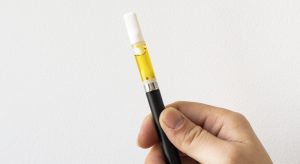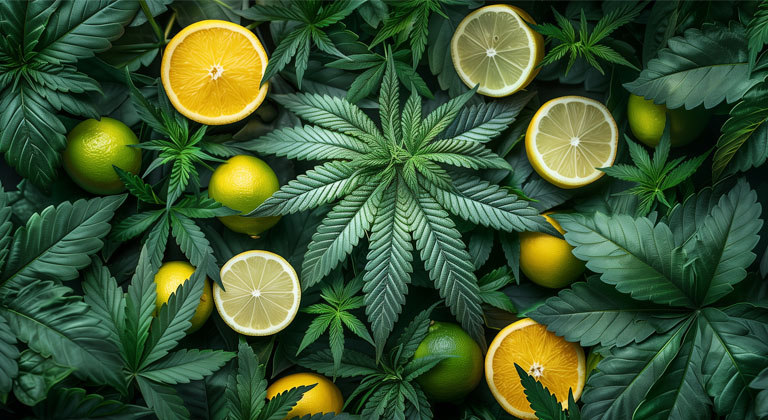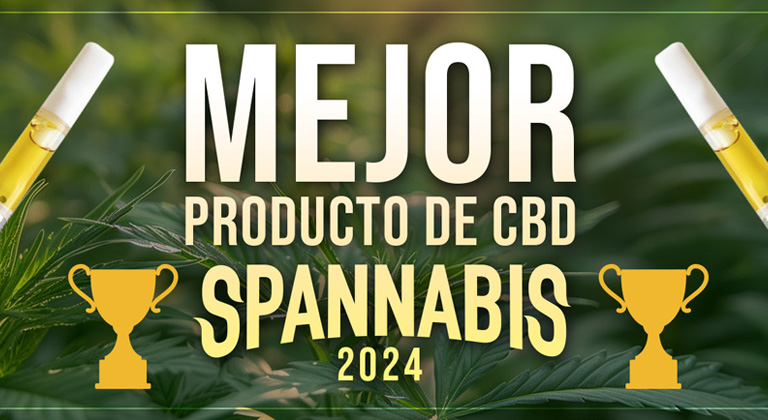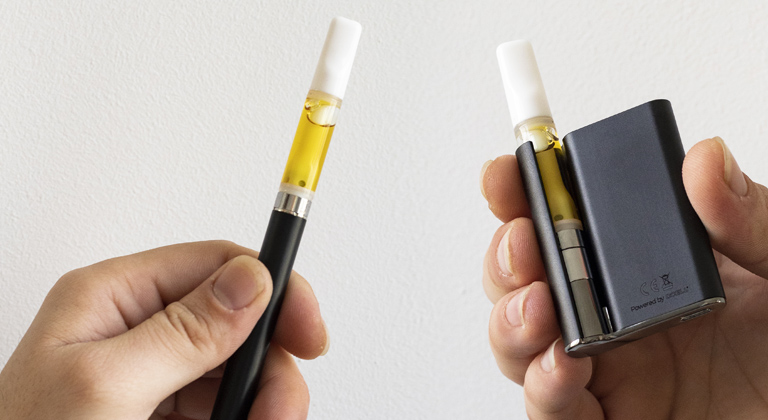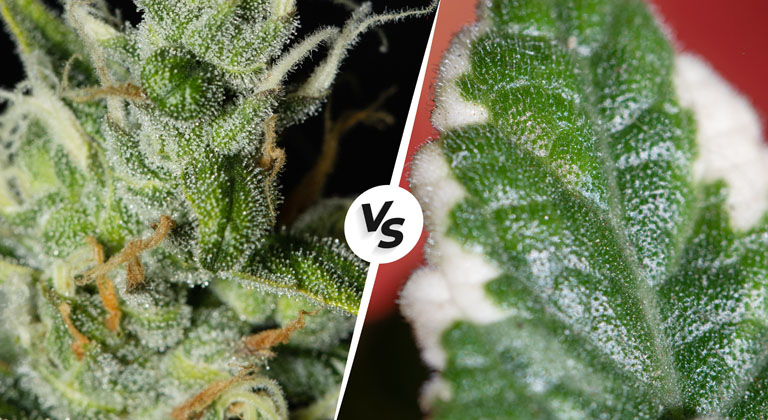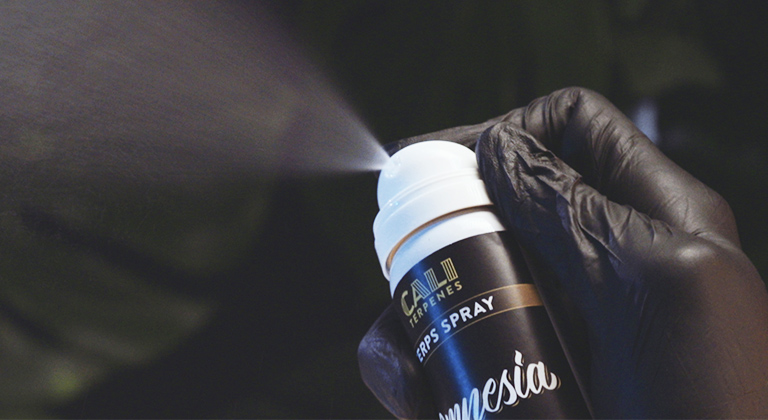Known for his sharp understanding of the latest trends and innovations in the industry, Enrique Rodríguez has also demonstrated an interest in sustainable solutions. His focus on packaging reuse within the circular economy is an example of how his vision can influence a field where sustainability and innovation are increasingly important.
Interview with Enrique Rodriguez, Commercial Delegate of Vichy Catalan Corporation
Today, Enrique will share with us his approach on how craft beer companies can stay relevant and competitive in an ever-evolving market. Get ready for a conversation full of insights and practical advice from one of the most visionary professionals in the sector.
The evolution of craft beer, a look through the eyes of Enrique Rodriguez
Interview with Enrique Rodriguez by Cali Terpenes
Enrique, your article “What’s happening with craft beer?” offers a fascinating perspective on the world of craft beer. Could you tell us more about your experience in the food and beverage industry?
I’m 50 years old, and since the beginning of my working life, I’ve been connected to the food and beverage sector. I’ve worked in dairy sector companies, multinational corporations like Nestlé, and, currently, with the Vichy Catalan Group.
Although it’s not only that; my connection is also personal. When I travel, not for work but for leisure, my activities always revolve around some kind of gastronomic experience. I travel to eat, to drink, and many times I leave my family at the hotel or in a park to sneak away to a supermarket, store, or fair to see the products being sold. There’s something about it that fascinates me.
You claim that there’s been a shift in consumption habits, with people drinking less alcohol. In your opinion, what strategy should companies in the spirit sector employ to adapt to these changes?
In my opinion, the Covid-19 pandemic changed everything; perhaps this terrible era that is already part of human history has made us realize our vulnerability. Putting philosophy aside, no brand is immune to the significant shift in consumption habits that is occurring and has already occurred.
In the case of spirits, it’s crucial to understand that the nightlife sector has changed radically. We now go out earlier, what in Spain is called “tardeo,” and the new generations (Gen Z and Gen X) have a very different relationship with alcohol than we did.
The emergence of low-alcohol spirits was a really good idea by part of the the industry; in addition to adapting to new tastes, they’re receiving visibility they have never had before. I’m talking about the possibility of appearing, for example, in the media and other outlets, something that was not possible before due to regulatory issues.
However, these types of beverages should tell a story, and they don’t. A 20-year-old consumer doesn’t care if a distillery has been around for 200 years or if their liquor ages in barrels of whatever. On the other hand, the fact gin results from the berries of a tree called juniper, used as medicine in the Middle Ages… that can capture their attention and contribute to telling a story around the product.
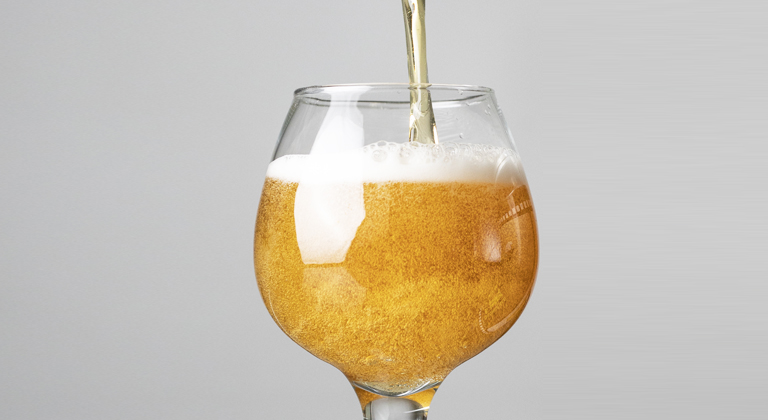
How would you describe the current state of the craft beer industry? What trends do you believe will define the future of this sector in the coming years?
The year 2022 was terrible for the sector due to issues such as the increase in production costs and raw material costs, leading to surcharges. A series of circumstances led many small breweries to close. However, it wasn’t a bad year in terms of production, as 244,000 hectoliters were produced, a +16% increase compared to the previous year. This suggests that demand obviously still exists.
However, the sector faces a significant problem that ultimately defines it: size and fragmentation. Currently, there are 476 beer factories in Spain (with legal authorization), compared to the 520 that existed in 2021, for example.
However, of the total, I don’t believe that the number of factories with moderately stable and significant production reaches even 200. The rest either no longer produce their own beer (they do it for others), or their production is very local and limited.
Another major issue is size. 80% of these factories have no more than three permanent employees. Therefore, in the end, only the larger companies with greater production power dominate the craft beer market.
In my opinion, the key to success for these companies would be a strong commitment to professionalization, creating strategic plans to achieve size, diversification, and internationalization. I believe these measures are necessary to survive in such a crucial sector in our country, such as the beer industry, especially in craft beer.
As for trends, they’ll align with other beverages, both alcoholic and non-alcoholic. In my opinion, a clear emphasis should be placed on flavor. Flavor matters. It may seem obvious, but experience tells me it’s not so straightforward. Your product must taste good; that’s what hooks people, and everything else follows.
Another trend we might see is a decrease in alcohol content, even reaching 0%. Lastly, we’ll likely start seeing beers with added value in the form of functional or cognitive ingredients for physical and/or mental well-being.
In my opinion, a clear emphasis should be placed on flavor. Flavor matters. It may seem obvious, but experience tells me it’s not so straightforward. Your product must taste good; that’s what hooks people, and everything else follows.
In this regard, you talk about functional beers related to well-being, and I understand you’re referring to non-alcoholic beers. Do you think this potential new trend would be related to these new generations that have different habits, and thus, perhaps the issue of health care is more present than in other generations?
Absolutely. As I mentioned earlier, new generations don’t relate to beverages or any other product the way previous generations did. They have unprecedented access to information, which can sometimes become over-information, even incorrect and biased, but unique to any other generation.
They relate to brands and products in a completely different way, more based on group acceptance. In other words, if my social group drinks this, I also feel the need to drink this.
In these new generations, despite hearing news about infamous outdoor drinking gatherings, alcohol consumption is going to decrease. Alcohol content is no longer a priority for them; instead, other attributes, such as flavor, as well as a potential functional or social benefit of consuming that beverage, take precedence.
Does the scenario you described for the craft beer sector also apply to industrial breweries? If so, what do you think these large companies should do to adapt to the new demands of the public?
Well, a little bit of the same. It’s true that the values a small craft brewery aims to convey are not the same as those of a large renowned brewery, but in the end, it’s somewhat similar. How and to whom do you want to sell your product?
In the case of industrial beers, they have a wealth of resources and powerful marketing departments that work all day to precisely detect these changes in habits, tastes, and trends—and incorporate them into the products they launch into the market.
We’re seeing cases of large breweries launching products based on AI (Artificial Intelligence), which is essentially a powerful marketing resource. Industrial breweries have done something very well that small breweries haven’t taken advantage of, such as taking a type of beer like the IPA, initially craft, and taking it to another level. With this, they have managed to dominate the market.
Bigger breweries have read the market very well – always demanding novelties – and presented something that has existed for many years as something completely innovative.
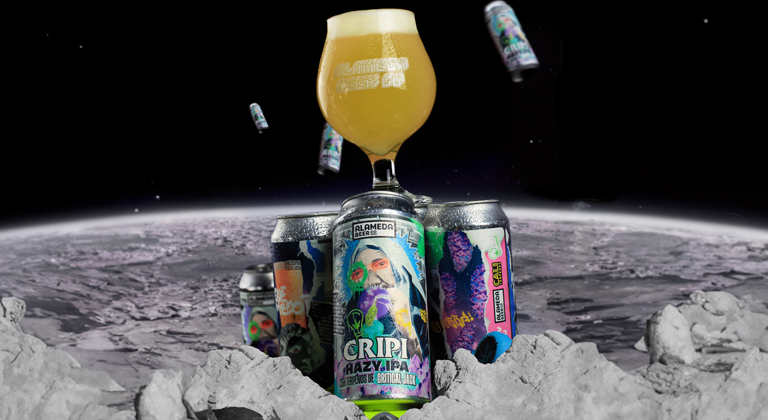
As you mentioned recently, ready-to-drink alcoholic (or non-alcoholic) cocktails (RTD) and flavored malt beverages (FMB), with or without alcohol, are on the rise among a younger audience. Do you think terpene profiles and botanical aromas can contribute to bringing new innovative creations in this field to light?
Without a doubt, botanical aromas have been a trend for several years now. There is no distilled or mixed drink that doesn’t have products in its portfolio with botanical aromas. The years 2024 and 2025 could be the years of terpenes, as they contribute to an enhanced aroma and flavor experience in the beverage industry. I’m sure we will see, as we are already seeing, new creations where the aromatic profile is carefully and selectively chosen.
The brewing industry cannot ignore the new wave of beverages and trends that are coming, so they should indeed consider reconfiguring their recipes and diversifying their offerings a bit. I believe the way to sell a beer or any product is to explain the story behind it, not just the attributes that the specific beer contains, but how that beer will make me feel.
In your article, you mentioned the incorporation of flavors like piña colada, guava, seaweed, and cucumber in beers. How do you see the potential of botanical cannabis terpene profiles to create groundbreaking flavors in craft beer? Do you think they could influence the innovation and differentiation of craft beers in this context?
Beer has always been the leader, the pioneer in creating recipes with different flavors, as its available aromatic profiles are impossible to find in any other beverage category. However, it’s important not to saturate the market with beers that no one has asked for or that few people understand beyond underground circles.
Instead, if we observe that beverage trends are pointing in a specific direction, beer should also hop on this train – it shouldn’t be oblivious to these new demands.
Certainly, brewing a beer with a flavor profile using cannabis terpenes adds an innovative and unprecedented level of differentiation.
In an increasingly globalized world, differentiation is very important, if not vital. The previously mentioned “extra” value and an added ingredient, such as something botanical, are a clearly demonstrable way to achieve a different, unique result.
Many times, I read about, hear of, or even taste products that are sold with a very vague or almost nonexistent “extra” value. In this case, a beer with botanical cannabis terpene profiles, the differential value is completely remarkable.
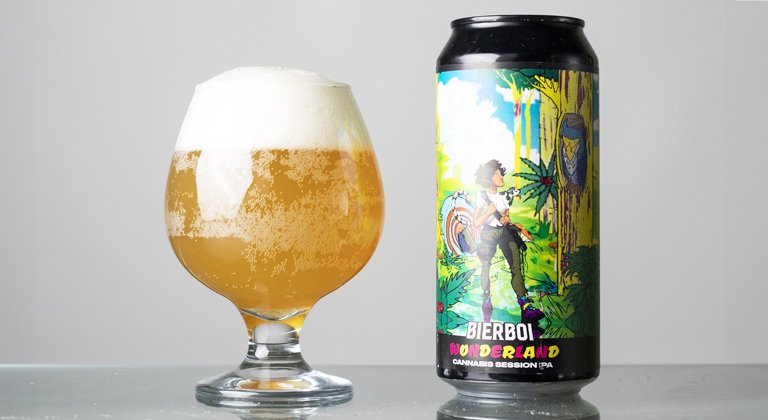
The years 2024 and 2025 could be the years of terpenes, as they contribute to an enhanced aroma and flavor experience in the beverage industry. I’m sure we’ll see, as it’s already happening, new creations where aromatic profiles are carefully and selectively chosen.
You mentioned that certain breweries are changing their recipes. Could you share some specific examples of innovations in the sector that have impressed you?
Perhaps it’s not so much about creating a highly innovative recipe with exotic ingredients, but rather the way some companies have known how to sell beer through the emotions evoked in the consumer.
For example, “And Union”, a small German brewery that launched a collection of 7 beers in 2007, one for each day of the week, named after the respective day. Each beer was completely different—Monday’s one was alcohol-free to recover from the weekend, and as the week progressed, the beer became somewhat more intense, ending with Saturday and Sunday, which were two powerful wheat beers with very different flavors.
“Kind of silly,” some might say, but this company has been in the sector for over 16 years, winning awards not primarily for their beer but for its packaging and their marketing campaigns. That’s how you sell beer.
Another thing I like is how many breweries, both small and industrial, use leftover bread. Replacing up to 50% of barley with old bread for brewing beer is a great idea; very cutting-edge, and contributes to circularity and reducing food waste.
You state that another new milestone on the horizon could be “functional” beers. Could you tell us more about this topic?
It’s a new mantra in the beverage world—functionality. Why do we drink? To hydrate, to provide our bodies with elements that we either lost doing physical activity or that our bodies can’t generate on their own in appropriate amounts and time. Also, we drink for pleasure. Why not combine both?
The next step is, besides achieving these two things, making the beverage provide an added benefit in the form of a stimulant, relaxant, etc. Energy drinks have paved the way, which are now under scrutiny, but a new generation of beverages is already here: drinks that hydrate, relax, help us concentrate, stimulate and encourage us without depriving us of sleep, etc.
Beer will also get there; obviously, alcohol cannot be in the equation—alcohol and functional benefits don’t go hand in hand. However, we could see more non-alcoholic beers, or one with minimal alcohol content that contains a series of functional ingredients like nootropics (for cognitive and mental health).
Why not a non-alcoholic beer with a high protein content or with L-theanine (which improves concentration and sleep quality)? There is an incredible and already developed world of formulas and ingredient combinations for the beverage sector that work very well in other industries, such as sports supplementation (the fitness and bodybuilding world). It’s an innovative and cutting-edge sector, and many new consumer products come from there.
And terpene profiles, which undoubtedly open up a new and almost unexplored universe in the world of beer.
Many times, I read about, hear of, or even taste products that are sold with a very vague or almost nonexistent “extra” value. In this case, a beer with botanical cannabis terpene profiles, the differential value is completely remarkable.
What do you think are the biggest challenges and opportunities of integrating cannabis terpene-based aromas in beer crafting?
On one hand, even though it may not be the case for terpene profiles, I think with other “cannabis” products, the main challenges often lie mainly at an administrative and regulatory level.
The absence of specific regulations regarding cannabis-derived products (including CBD) is a challenge but also an opportunity. The FDA, the top authority for food and pharmaceutical safety in the U.S., has scrutinized this sector and is imposing serious restrictions on the marketing of CBD products.
This doesn’t apply to cannabis terpene-based aromas, as they are completely unrelated to this issue, not containing CBD or any other cannabinoid. Therefore, the industry will likely view this type of ingredient as a viable alternative to the former.
The other challenge is purely educational. There needs to be an intensive effort in training and education. It’s crucial to not only talk about the attributes of the product but also the benefits it provides. Let me explain: my mother went to buy a car at a dealership, and the salesperson started explaining the hybrid technology, horsepower, and so on. What my mother wanted was a small car that consumed little fuel to go to the city center, park, and return home. At another dealership, they understood perfectly, asked the right questions to know exactly what she was looking for, and offered a small, fuel-efficient, and easy-to-use car (without too much technology).
With this example, I’m trying to convey that it’s the same when it comes to new products entering the market: if I don’t know what my customer needs or why they want it, no matter how much I emphasize the quality of my product, I won’t sell it. It doesn’t work that way.
Energy drinks have paved the way, which are now under scrutiny, but a new generation of beverages is already arriving: drinks that hydrate, relax, help us concentrate, stimulate us and encourage us without depriving us of sleep, etc.
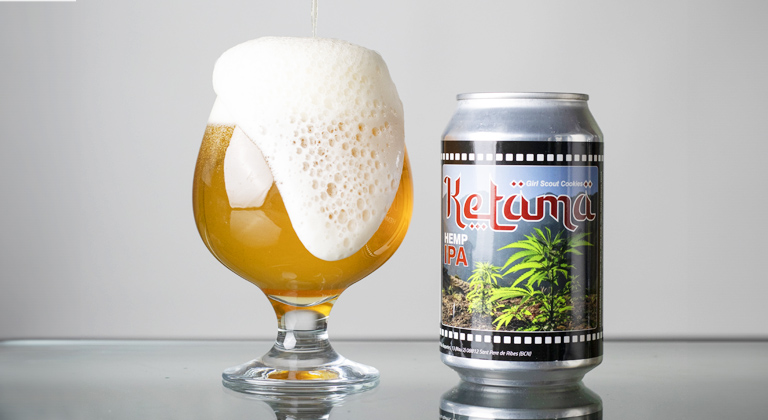
What advice would you give to craft brewers interested in experimenting with new trends?
I would tell them to think outside of the box. Step out of the world of beer and explore other diverse sectors, for instance, as I mentioned earlier, the field of sports supplementation (fitness and bodybuilding).
In our industries, and I include myself, we tend to be quite insular, interacting only within our circles. Soft drink producers look at what their competitors in the same field are doing, and the same goes for wine producers observing other wineries. We should explore other fields like confectionery (functional gummies or gummy cocktails like Osito & Co.), pharmacology, biology, even information technology and the internet (look at what Beck’s brewery did with an impressive AI-based packaging, Coca Cola did the same).
Hops and cannabis, both from the Cannabaceae family, share terpenes such as Humulene, crucial in beer aroma. Unlike hops, cannabis has a higher amount of different terpenes and contains molecules not found in hops. This rich variety of terpenes could be employed in brewing to enhance or modify hop aromas, achieving unique profiles ranging from scents similar to classic hop strains to citrusy, herbal, or spicy aromas. Additionally, cannabis terpene profiles could provide brewers with a tool for maintaining the quality and consistency of their beers, even in situations where traditional ingredients are not readily available.
Do you believe terpene profiles could be a future tool for brewers to maintain the consistency and quality of their beers, even in situations where traditional ingredients are not easily available?
I’m confident that we’ll hear about terpenes as a key element in the development of beers with much richer aromatic profiles, allowing for superior and enduring consistency and quality.
If we also offer brewers a range of terpenes that can replace traditional ingredients more simply and quickly, the future undoubtedly is in the hands of terpenes. Especially now, in a time when we face a scarcity crisis of various ingredients. Bringing to the market a viable substitute with good availability in terms of time and place is a guarantee of success, for sure.
Lastly… What new beer aroma would you like to try in 2024?
Well, another trend discussed in the industry is nostalgia. Flavors and aromas that transport us to a specific moment in our lives (such as childhood).
Something that really caught my attention was watching the new Willy Wonka movie with my son the other day; there was a candy that changed its flavor as you ate it. It amused me, but at the same time, it got me thinking—I would love to taste a beer that gives me a different flavor with every sip. It’s like a letter to Santa, and what more could I ask for? Hahaha… It would be really cool to see.


